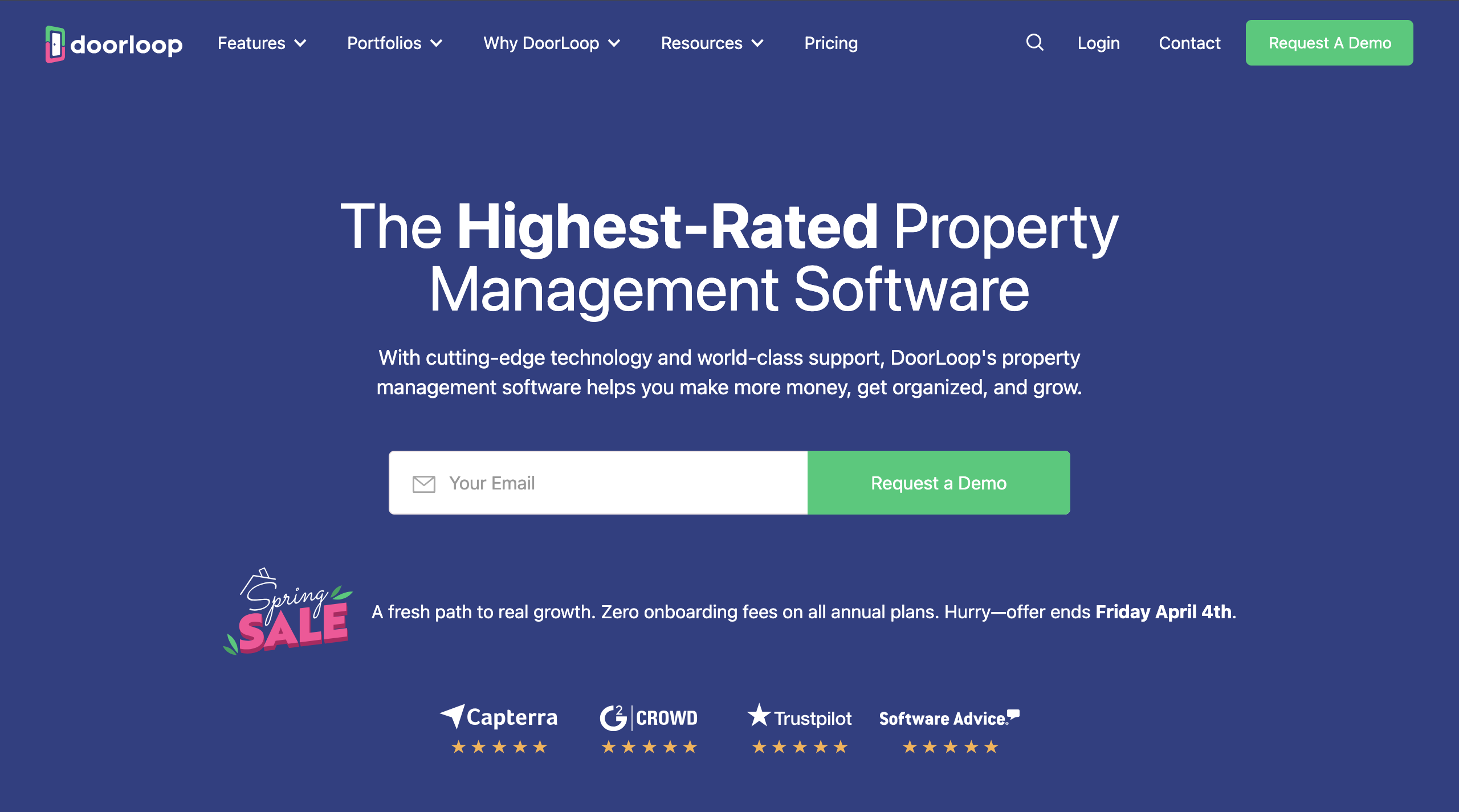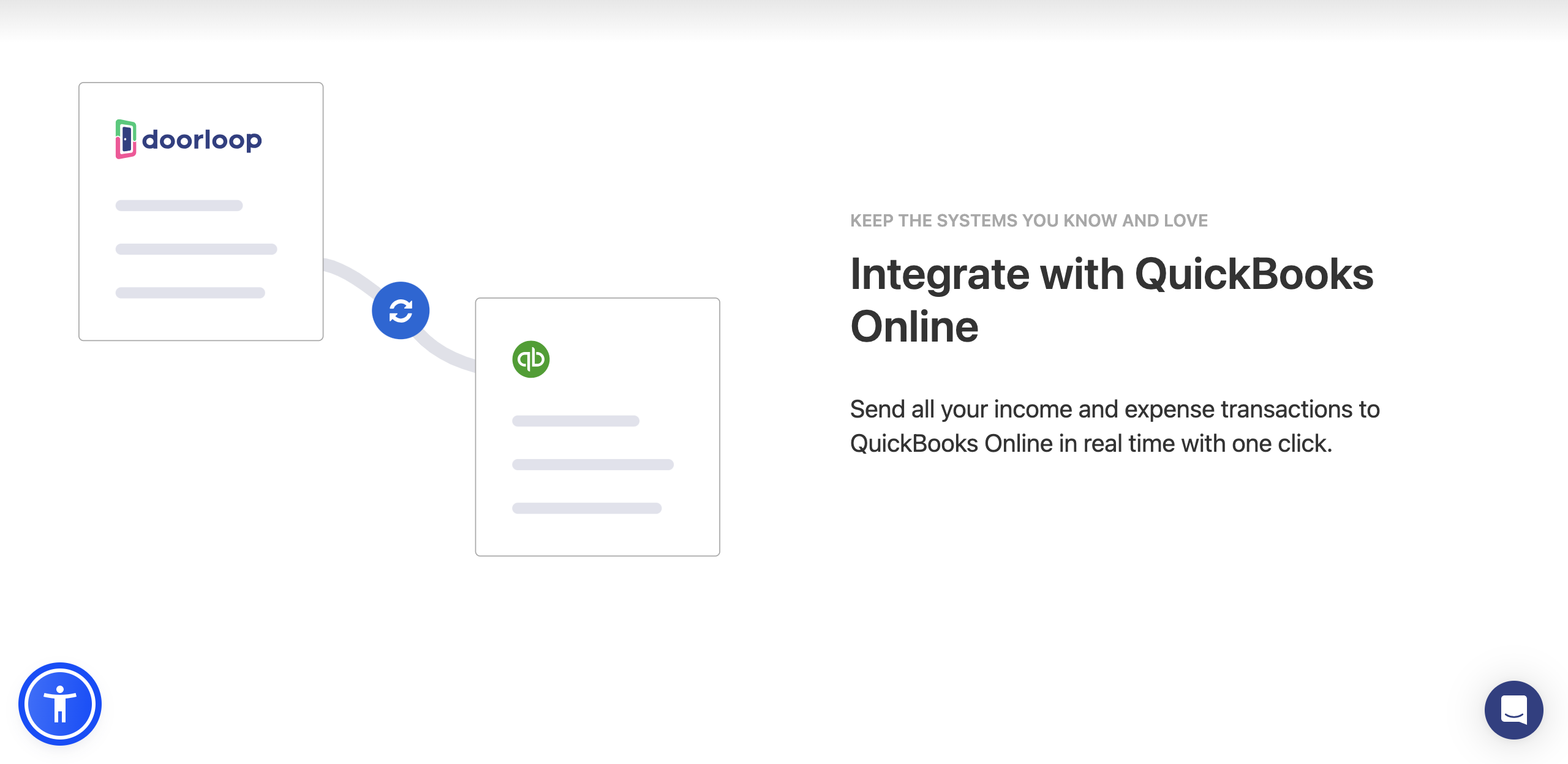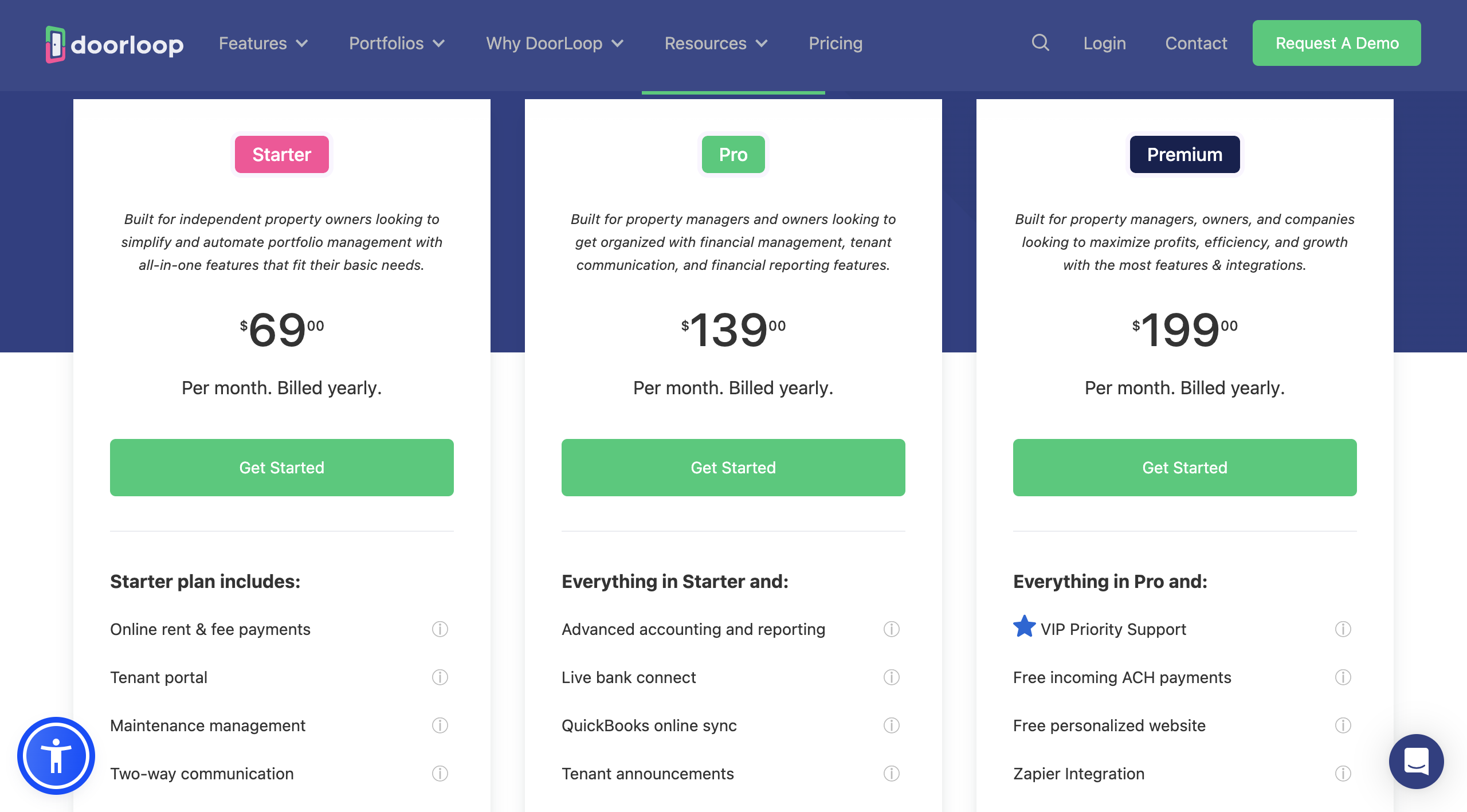Learn How To Manage Your Rental Property on Airbnb
Get access to our 5-day training course on managing your vacation rental property in Dubai.
Download Guide
Finding the right short-term rental software is harder than it looks. There are plenty of options, but most of them look good on the surface and start falling apart once you dig in. So we decided to go all in—test 11 different platforms and see which one actually fits the way we work.
Right now, we’re on number 9: Doorloop.
We’re documenting this whole process for other property managers who, like us, are looking for a property management system that actually fits how they work.
This isn’t about what’s “best” in general—it’s about what works for us at Homevy, a short-term rental company managing properties in Dubai. So if you’re hoping to find your own perfect match, maybe our breakdowns will save you some time.

Image by Doorloop
The first time we looked at Doorloop’s property management dashboard, it was clean and intuitive. The interface was modern, polished, and easy on the eyes. It also had key info like upcoming rent payments, maintenance requests, and tenant messages right where you’d expect them.
What really stood out, though, was how much emphasis Doorloop placed on financials. The accounting tools seemed solid, with neat-looking reports, a tidy ledger, and financial highlights right there on the main screen.
That said, we couldn’t help but notice how tailored it was to the long-term companies. Terms like “tenants” instead of “guests,” “leases” rather than “bookings,” and the monthly system all leaned in the long-term direction. For short-term rental companies like us, it made us wonder if Doorloop’s management system could really fit our model.
For the other property management software we tried, we checked how many clicks it took to get certain things done, checked how things flowed, and paid attention to how information was laid out. And for Doorloop it wasn’t any different.
The leasing tools stood out right away. Doorloop covers the full journey—from the first application all the way to renewal—without missing a thing. Their accounting system also made a strong impression, with detailed reports, expense tracking, and even tools for splitting earnings between property owners. Pretty powerful stuff. That was something even Hostify, with all its owner-focused features, didn’t handle quite as well.
We also liked how maintenance was handled. You can create, assign, and keep tabs on work orders all in one place. And the tenant portal? It’s clearly built for long-term renters, offering features like online rent payments, maintenance requests, and easy access to documents.
Eventually, one thing became obvious: Doorloop’s management system is built for traditional, long-term property management. The language, the workflows, and the structure was all geared toward monthly leases.

Image by Doorloop
Even though Doorloop’s management system is clearly built with long-term rentals in mind, a few of its features stood out as potentially game-changing for any type of property management setup:
This part felt like Doorloop’s superpower. The accounting tools were deep and customizable.
Here’s what impressed us:
For owners who care about the numbers (and let’s be honest, most do) this kind of financial clarity is a major win.
Most PMS overlook the owner experience, but Doorloop got it right.
Features we liked:
This kind of transparency can seriously boost trust and cut down on time spent chasing updates.
Keeping properties in shape is non-negotiable, especially for short-term rentals. Doorloop’s maintenance system checked a lot of the right boxes:
All in all, it felt like a system designed to keep things running smoothly without you needing to hover over every task.
If you’re tired of digging through folders and email chains, this part’s for you. Doorloop has:
For teams used to traditional property management tools, the learning curve seemed pretty gentle.
One thing we really liked was the customizable dashboard. Being able to rearrange and prioritize the information you care about most is a small touch that makes a big difference in day-to-day use. Plus, the mobile experience was solid—perfect for team members on the go or checking in from a property.
Butttt, we couldn’t ignore the friction. Adapting Doorloop to short-term rental workflows would mean stitching together workarounds or even building out custom solutions. The system just wasn’t built for our short-term model, which could slow things down and make day-to-day operations more complicated than they need to be.
And once you’ve seen what a short-term-specific platform like Hospitable can do, the gap becomes obvious. Doorloop barely scratches the surface on messaging because, well, it doesn’t have to. It wasn’t built for guests who check in on Thursday and out on Sunday. It was built for tenants who stay 12 months.
Doorloop’s pricing was clear and straightforward, but it’s changed a bit from what it used to be. Now, instead of scaling by unit count, the plans are set tiers for up to 20 units, and after that, it’s an extra cost per unit.

Photo by Doorloop
Most of the core features are embedded into the plans, but some, like QuickBooks integration and website customization are locked behind the higher tiers. You’ll also want to budget for things like payment processing fees and potentially a setup fee if you’re managing a bigger portfolio.
On paper, it’s competitively priced compared to other tools built for long-term rental operators. But for our short-term rental business? It gets pricey fast. You’ll likely still need third-party tools for things like channel distribution, dynamic pricing, and automated guest messaging, all of which can push your total cost of ownership up.
As much as we appreciated Doorloop’s strengths on the long-term side, there were two major areas where it just didn’t click with the needs of our short-term rental business.
This one was a dealbreaker. For a short-term rental setup, syncing with platforms like Airbnb, Booking.com, or Vrbo isn’t optional—it’s essential. But Doorloop didn’t offer:
Without channel management, we’d be left using third-party tools just to keep things running. That’s added cost, added risk, and a lot more work.
Doorloop’s communication features were clearly built for long-term tenant relationships not fast-paced guest experiences.
Here’s what was missing:
In a market like Dubai, where guest expectations are high and competition is tight, that kind of communication gap makes a real difference.
There’s no doubt that Doorloop has a lot going for it. From financial tools to well-thought-out owner reporting, the platform clearly understands what matters to property managers. We genuinely liked the clean interface, the ease of navigation, and how well the system was structured overall.
But for us, a short-term rental company, we would have to rely on too many third-party add-ons just to make it work. That kind of patchwork setup just doesn’t support our fast-moving nature, and that’s why we walked away.
We then decided to give HostHub a try. This wasn’t about Doorloop falling short—it’s a great platform for the audience it’s built for—just not for us.
Get access to our 5-day training course on managing your vacation rental property in Dubai.
Download Guide